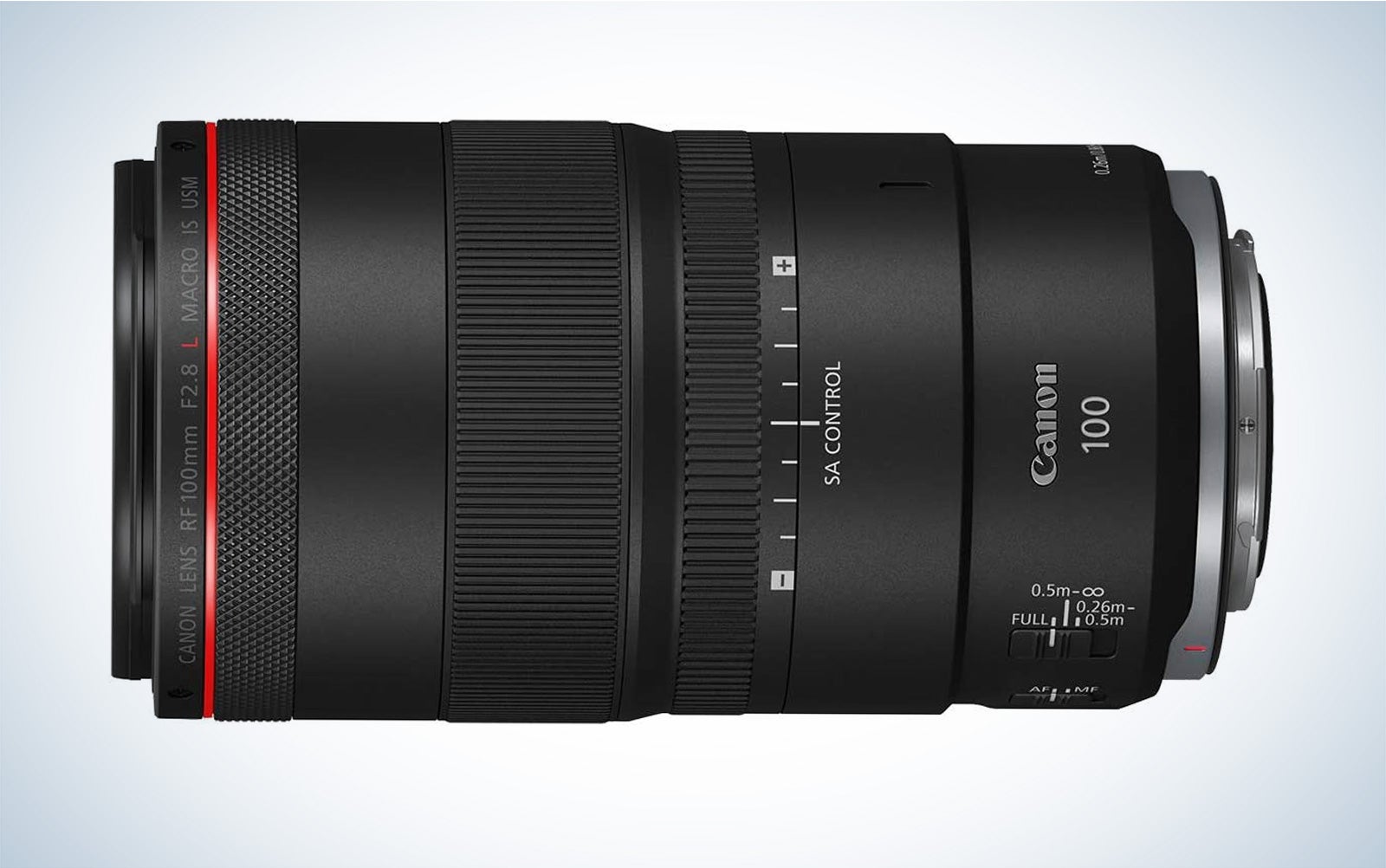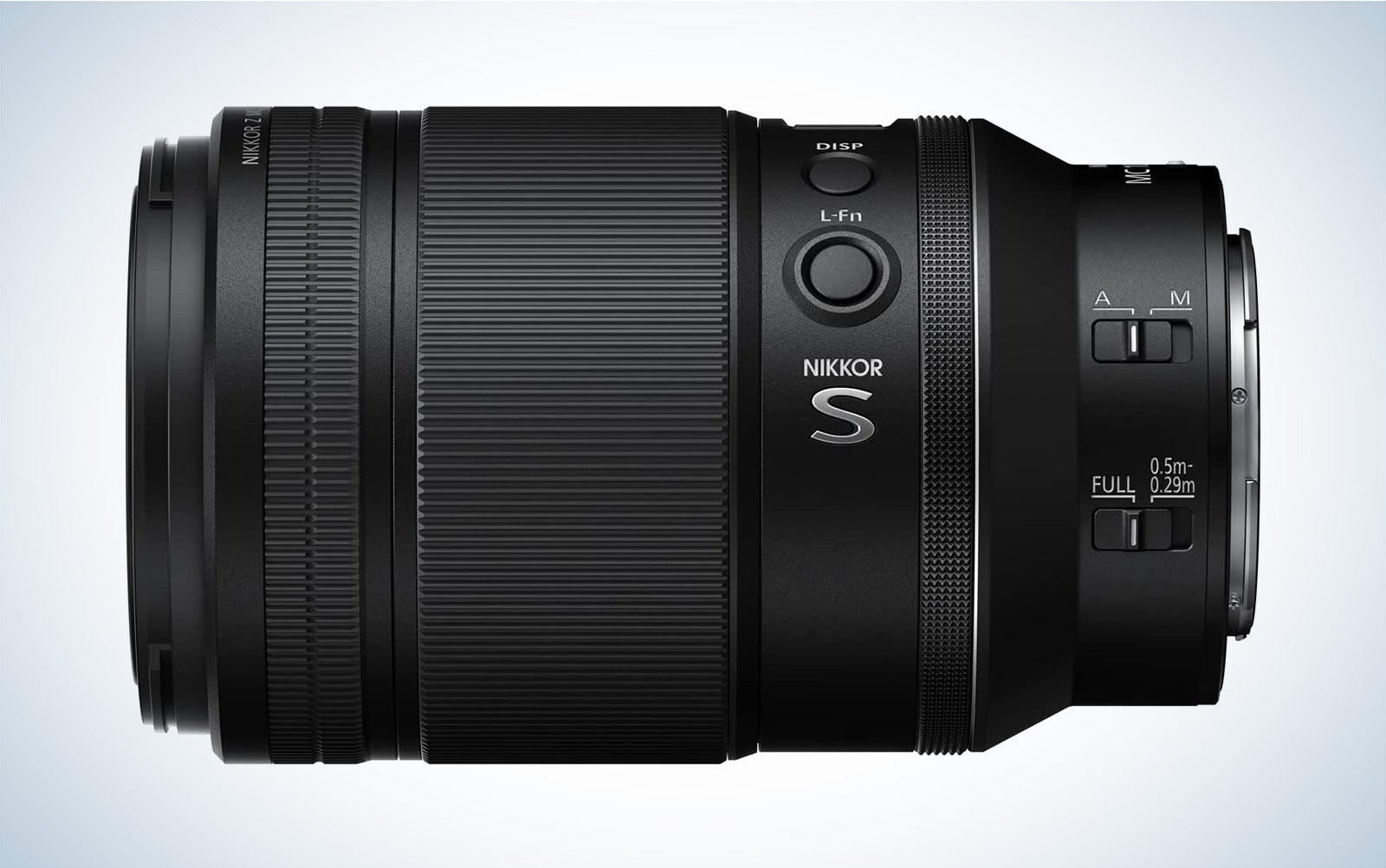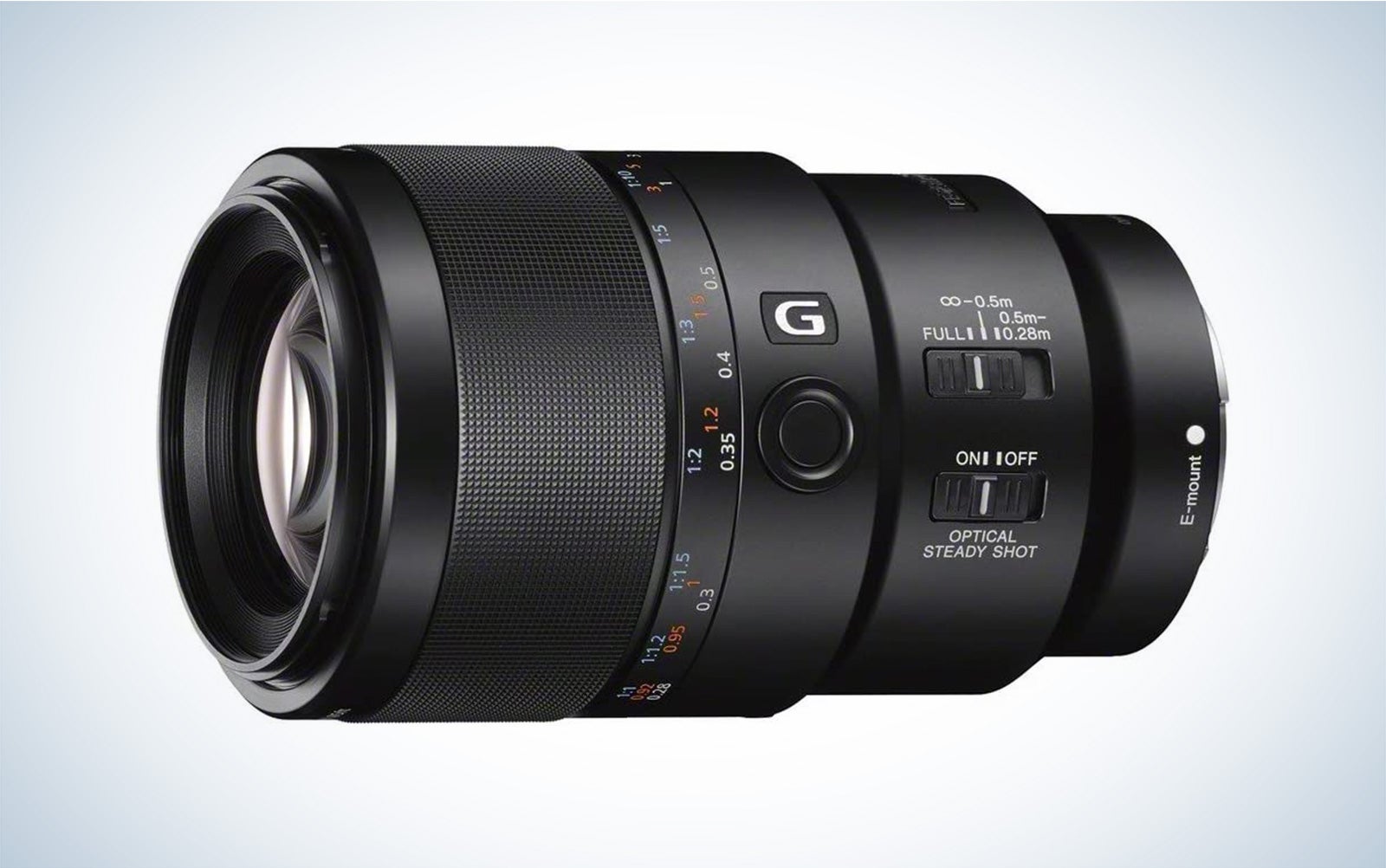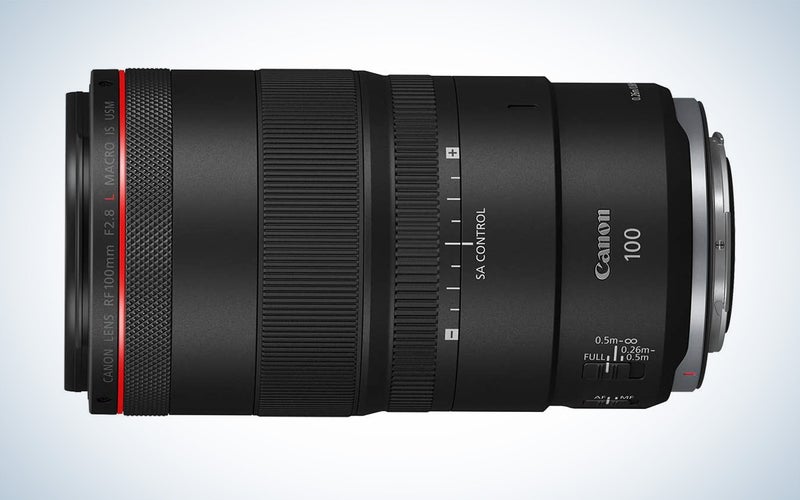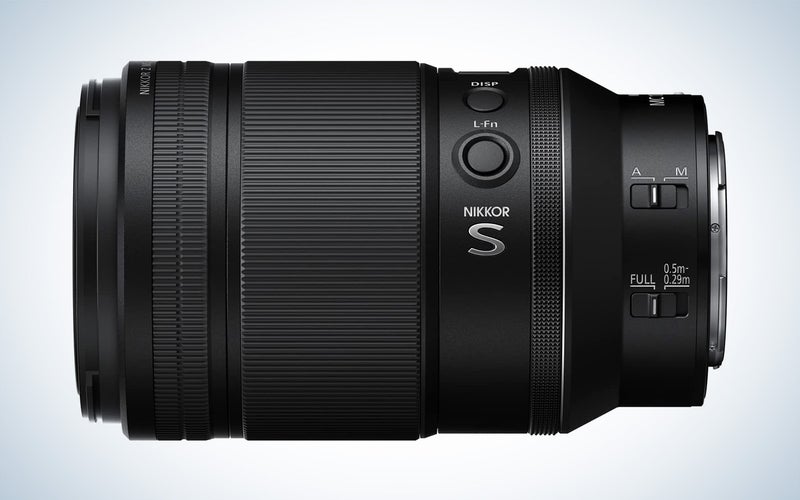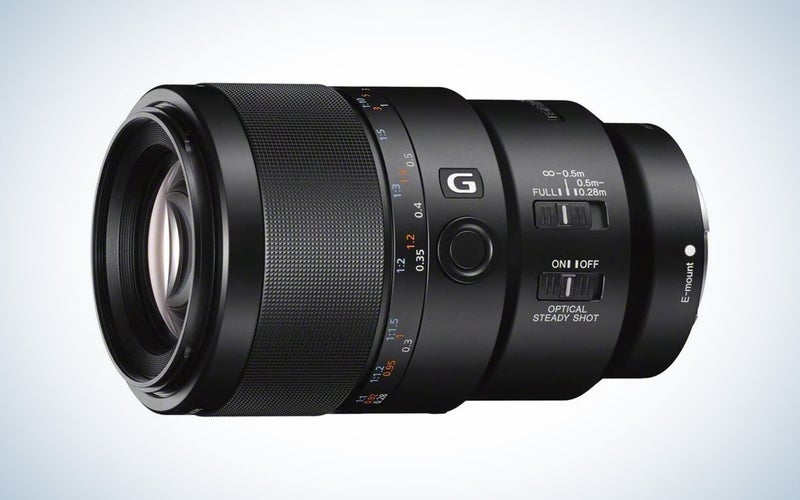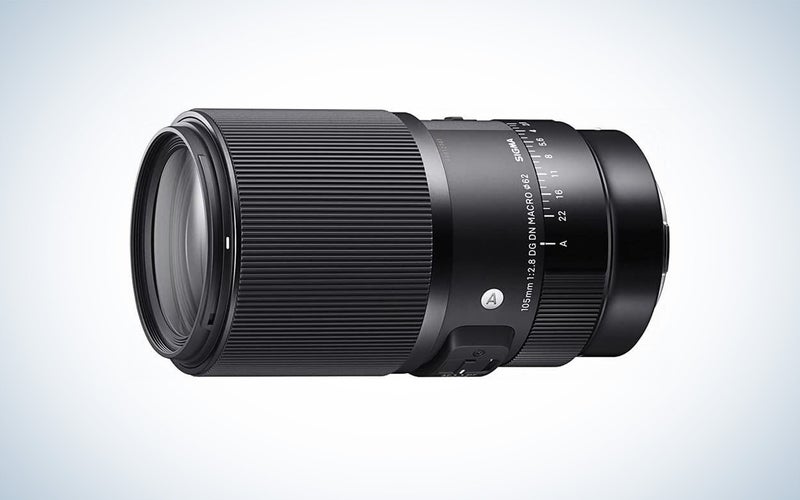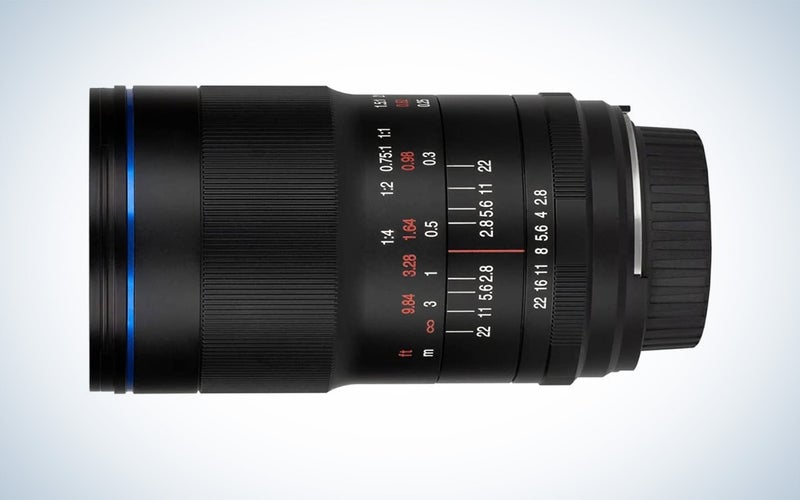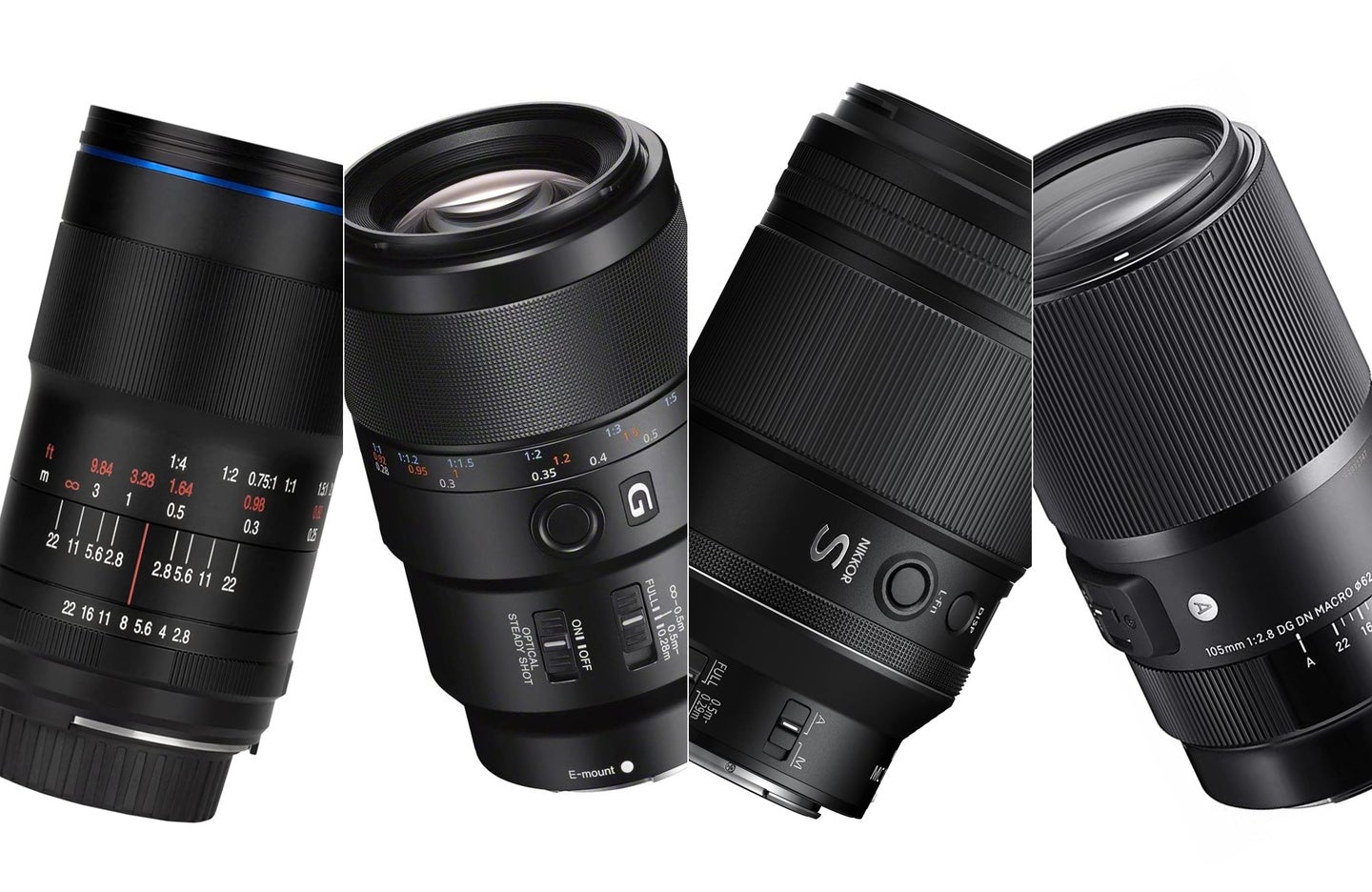
We may earn revenue from the products available on this page and participate in affiliate programs. Learn more ›
Macro lenses provide a unique ability to magnify tiny details to their true-to-life size, or at times even larger than life. They can reveal details our eyes may not be able to pick up on, allowing us to see new and interesting subjects. Macro images often depict mesmerizing textures and colors or dramatic views of tiny creatures. It can be a challenging genre, but with the best macro lenses, you’ll be able to document unique perspectives.
- Best for Canon: Canon RF 100mm f/2.8 L Macro IS USM
- Best for Nikon: Nikon NIKKOR Z MC 105mm f/2.8 VR S
- Best for Sony: Sony FE 90mm f/2.8 Macro G OSS
- Best Sigma: Sigma 105mm F2.8 DG DN Macro Art
- Best budget: Venus Laowa 100mm F/2.8 2X Ultra Macro APO
Best macro lenses: Ratings & reviews
Best for Canon: Canon RF 100mm f/2.8 L Macro IS USM
Canon
Why it made the cut: This Canon macro offers a larger-than-life 1.4:1 magnification ratio, quiet autofocus, and five stops of in-lens stabilization for sharper images.
Key features:
- Mount: Canon RF
- Maximum aperture: f/2.8
- Minimum focusing distance: 10.2 inches
- Magnification ratio: Up to 1.4:1
- Dimensions: 3.2 x 5.8 inches
- Weight: 1.6 pounds
Pros
- Allows you to adjust the shape and look of bokeh
- 1.4x magnification
- Five stops of in-lens stabilization
- Fast and quiet autofocus
Cons
- A bit pricey
Canon’s original 100mm f/2.8 macro lens was an impressive choice for its DSLR cameras, so it’s no surprise to find the mirrorless version a worthy follow-up. It has a fast f/2.8 max aperture and includes five stops of stabilization. And when paired with a camera with in-body stabilization (IBIS), you’ll get up to eight stops of shake reduction. That’s huge if you need to handhold your camera for macro shots, which typically require small apertures to maximize depth of field.
One of the most unique aspects of this lens is the Spherical Aberration Control Ring. It allows you to change how hard the edges of the bokeh are so that you can change from hard, obvious circles to softer, blurrier bokeh. It gives you much more creative control than you’ll get with other lenses.
This 100mm lens offers up to 1.4x magnification if you shoot at the closest end of the focusing range, resulting in dramatic macro images. It has fast and quiet autofocus and also includes a focus range limiter switch to keep the lens from searching for focus where you know you won’t need it. And it’s sealed against dust and moisture, so if you get caught in some rain, you won’t need to worry about the lens getting damaged.
If you would like to see more Canon macro lens options, check out our top picks.
Best for Nikon: Nikon NIKKOR Z MC 105mm f/2.8 VR S
Nikon
Why it made the cut: Nikon’s 105mm macro lens is a versatile lens, good for macro images and portraits, making it ideal for wedding photographers.
Key features:
- Mount: Nikon Z
- Maximum aperture: f/2.8
- Minimum focusing distance: 11.4 inches
- Magnification ratio: 1:1
- Dimensions: 3.3 x 5.5 inches
- Weight: 1.4 pounds
Pros
- 4.5 stops of stabilzation
- Also great for portraits
- Has an OLED lens information panel
- Compatible with Nikon’s focus stacking mode
Cons
- Aperture varies with focusing distance
As part of Nikon’s S line of lenses, you can expect top-quality optics in this Nikkor macro lens, resulting in excellent image quality and beautiful bokeh. It has fast and accurate autofocus, and with limited focus breathing would also be a great tool for macro videos. Robust weathersealing protects it from the elements. The unique OLED display on the top of the lens allows you to quickly see aperture setting, focus distance, and depth of field figures even in dark conditions.
The 105mm focal length offers a versatile angle of view, making it suitable for more than just macro images. Wedding photographers will be able to go right from taking macro shots of the rings to stunning portraits without switching lenses. The 4.5 stops of vibration reduction help with getting sharp images in those low-light conditions. And if you have a camera with IBIS, you’ll get even better performance.
There is one downside to this lens, however. When you focus at 11.4 inches–the closest focusing distance–you are limited to an aperture of f/4.5. Also, although it is reasonably priced for such a focal length, it is pricier than the 50mm Z mount macro lens. If you still want macro capabilities on your mirrorless Nikon but want to save some money, you may want to check out its 50mm macro.
If you have a Nikon APS-C DSLR, the Nikon AF-S DX Micro-NIKKOR 40mm is also a great choice at a highly affordable price.
Best for Sony: Sony FE 90mm f/2.8 Macro G OSS
Sony
Why it made the cut: This Sony macro lens offers a versatile 90mm focal length, truly stunning image quality, and impressive autofocus capabilities.
Key features:
- Mount: Sony E
- Maximum aperture: f/2.8
- Minimum focusing distance: 11 inches
- Magnification ratio: 1:1
- Dimensions: 3.11 x 5.14 inches
- Weight: 1.32 pounds
Pros
- Exceptional image quality
- Fast, silent, and internal autofocus
- Easy switching between manual and autofocus
- Built-in stabilization
Cons
- Stabilization could be better
Sony’s macro offering is an outstanding lens with stunning image quality and beautiful bokeh. It utilizes Sony’s Optical SteadyShot image stabilization to reduce camera shake. Plus, you’ll get additional stabilization if you use a camera with IBIS.
As we’ve come to expect from Sony, it has impressive autofocus capabilities, thanks to the Direct Drive SSM system. But, if you prefer to adjust focus manually, the lens has an old-school push-pull focus ring, so you can quickly go back and forth. There is also a focus hold button and a focus limiter switch, both of which are very useful for macro photography. And, all focusing is internal, so the lens won’t change lengths when focusing.
Though some may prefer a longer telephoto for macro photography, the 90mm focal length is a versatile option. It will be fantastic for portraits as well as detail shots. And it is dust and moisture-resistant, giving you the confidence to use it even in less than ideal conditions.
Best Sigma: Sigma 105mm F2.8 DG DN Macro Art
Sigma
Why it made the cut: Sony E mount and Leica L mount users can take advantage of this highly affordable lens. And despite the budget price, it offers truly exceptional image quality and excellent autofocus.
Key features:
- Mount: Sony E, Leica L
- Maximum aperture: f/2.8
- Minimum focusing distance: 11.6 inches
- Magnification ratio: 1:1
- Dimensions: 2.9 x 5.3 inches
- Weight: 1.6 pounds
Pros
- Very affordable
- Excellent image quality
- Fast and silent autofocus
Cons
- No stabilization
Sigma is well known for its well-priced but high-quality lenses, and its macro option is no exception. Falling in the top-tier Art line, this 105mm f/2.8 macro lens offers 1:1 magnification and can focus as close as 11.6 inches. And it is weather-sealed against the elements, which you typically only find in more expensive lenses.
A Hyper-Sonic Motor drives the autofocus, resulting in a quick and quiet autofocus system. There is also full-time manual focus control for when you need to make small adjustments quickly. To help prevent your camera from searching unnecessarily for where to focus, there is a focus limiter switch. That is especially useful on a 105mm focal length since your subjects will likely span a greater distance.
The aperture control ring can be de-clicked for video use. However, this lens does have some noticeable focus breathing that is less than ideal for video. There also isn’t any in-lens stabilization. If you don’t have a camera with IBIS, it may not be the best pick for you. But, the resolution and sharpness you’ll get from this lens are some of the best you’ll get in a macro lens, even across native lens options. That’s especially impressive, considering the price point.
Best budget: Venus Laowa 100mm F/2.8 2X Ultra Macro APO
Venus
Why it made the cut: It’s not only one of the cheapest full-frame macro lenses, but it offers 2x magnification and beautiful bokeh for impressive macro images.
Key features:
- Mount: Canon EF, Canon EOS RF, Leica L, Nikon F, Nikon Z, Pentax K, and Sony E mount
- Maximum aperture: f/2.8
- Minimum focusing distance: 9.72 inches
- Magnification ratio: 2:1
- Dimensions: 2.83 x 6.1 inches
- Weight: 1.4 pounds
Pros
- Very affordable
- Durable metal body
- 2x magnification
- Excellent image quality
Cons
- Manual focus only
Macro photography doesn’t have to be an expensive endeavor, as shown by this Venus Laowa lens. It offers a 2:1 magnification ratio, more than any other on our list, allowing you to create some really dramatic macro photos. It’s available for seven different mounts, so chances are it will work with your camera (provided you buy the correct one).
Despite the budget price, this lens offers beautiful image quality, on par with more expensive options. It is sharp edge to edge at all apertures and has beautiful bokeh. Many lenses start to lose sharpness at f/8 or so, but that is not the case here. That’s helpful when shooting macro since you will need to stop down to get more than a sliver in focus.
The downside to this lens is that there is no electronic communication between the lens and the camera. This results in manual focus aperture controls on the lens only. The manual focus shouldn’t be much of an issue if you stick to macro photography since you’ll likely want to adjust manually for that anyway. But, if you want this to double as a portrait lens, that could get frustrating. Likewise, some may not mind needing to change the aperture on the lens, but it could be a deal breaker for some.
If you’d like a smaller macro lens, Venus Optics also makes the smallest 2x macro lens currently available.
Things to consider before buying macro lenses
What are macro lenses used for?
Macro lenses are used for documenting small details, allowing you to focus up close and personal. Whether it be the texture of a feather, the intricate details of a flower, or the sparkle of diamonds on a wedding ring, macro photos help show off things we may not notice with our eyes alone.
Magnification ratio
It’s important to note that macro photography is more than just an image taken up close. A true macro photo requires a magnification ratio (also called reproduction ratio) of 1:1 or greater. That means that the resulting image will show the object or texture as the same size or larger as in real life. So, if you’re taking a photo of a bug that is just an eighth of an inch long, the image projected onto your camera’s sensor will also result in that creature being an eighth of an inch long. You may also see this reflected as 1x, as it is one times the subject’s size in real life.
It’s worth noting that some lenses will mention macro but will not offer that 1:1 magnification. And while you can use many lenses to take detailed images, if you want specific macro photographs, you’ll need a lens with at least a 1:1 magnification ratio. Be sure to look specifically for the magnification of a lens before purchasing if you want to use it for macro images.
Versatility
Most macro lenses offer the classic 1:1 magnification, but there are also lenses with 2:1 (2x) or even 5:1 (5x) ratios. Deciding between these is somewhat a matter of personal preference and how much detail you want to show. But it also impacts if you will be able to use the lens for anything other than macro photography.
You can typically use lenses with lower magnification ratios for things other than macro photography, such as portraits. But higher magnification ratio lenses cannot focus on anything very far from the lens and thus can only be used for macro. So if you know you want to focus on macro photography, a higher magnification might be best. If you don’t want to spend money on a lens that you can only use for one type of photography, go with a 1:1 ratio for more versatility.
Autofocus
Not all macro lenses will be able to automatically focus on your subject. Budget macro lenses, especially, will typically not have this ability. While this may seem like a problem, manual focus is generally the best way to focus when shooting macro images. That’s because the area that is in focus for this genre of photos is such a narrow amount that autofocus may not be able to zero in on exactly where you want to focus. With manual focus, you can precisely control where the sharpest point of the image will be.
If you want the convenience of using autofocus, make sure to specifically look for a lens that has those capabilities with your camera. It will likely cost you a bit more, so if you’d rather save some money, you’ll be better off with a manual focus macro lens.
Focal length
Macro lenses come in a variety of focal lengths, from wide-angle to telephoto, though telephotos are the most common. Macro lenses are always prime–or fixed focal length–lenses, so you will not find zoom macro lenses. Different focal lengths have advantages and disadvantages, so it can be challenging to choose which focal length is best for you.
Wide angle lenses will offer a wide, sweeping view, which can be dramatic and unique for macro images. They are typically compact and easy to handhold. However, they require you to get very close to the subject, which only works with inanimate objects or subjects that don’t move much.
Telephoto lenses provide a more narrow view. But they allow you to stand further back, especially as you get into long telephoto focal lengths. This is ideal for subjects such as bugs or anything that may be scared off by your close presence. Longer telephotos will be more expensive and also bulkier than shorter focal lengths. They can also make it tricky to get sharp images if you aren’t shooting in bright conditions and aren’t able to use a tripod. So, if you want to save some money and have a lighter, more compact lens, you’ll be better off sticking with a shorter focal length.
Minimum focus distance
The minimum focus distance of a lens refers to how close you can get to a subject and still be able to focus. If you get closer than that minimum focus distance, you will not be able to focus on your subject. As mentioned above, wide-angle lenses allow you to get very close to subjects, sometimes as close as just four inches. Telephoto lenses will allow you to stay a bit further back, typically around 10 inches or more.
While minimum focus distance is largely determined by focal length, it also varies within the same focal length across different lenses. If you know the subjects that you like to photograph are flighty, you can get away with a lens with a longer minimum focus distance. These also allow you to have room to add lighting equipment should you need to and help to keep your shadow off the subject. But, if you prefer to get up close and personal with your subject, look for a short minimum focus distance.
FAQs
Q: How much do macro lenses cost?
Macro lenses will cost anywhere from around $300 to $1,500. The price of the lens depends on the focal length, whether it includes stabilization or weathersealing, and any additional features and quality.
Q: Is it worth buying a macro lens?
If you like capturing tiny details, yes, it is worth buying a macro lens. While some lenses can focus quite close and produce good detail images, a macro lens cannot truly be replaced. A macro-specific lens will provide a lifesize reproduction resulting in a more dramatic and successful image of this specific genre.
Wedding photographers who want better ring shots, nature photographers who want to document smaller wonders, or anyone looking to improve their closeup photographs will benefit from a macro lens.
Q: What is the highest magnification macro lens?
The highest magnification macro lens you can buy is the Canon MP-E 65mm f/2.8, which offers 1-5x magnification. It is a highly specialized lens, only intended for macro use.
Q: What is the difference between a 50mm and 100mm macro lens?
The most notable difference relevant to macro photography is that a 100m lens will offer a larger working distance between the lens and subject than a 50mm. That means you will need to stand further back with the 100mm, but this prevents scaring off subjects like insects or other small creatures. And it provides room for lighting equipment if you need it. But, the 100mm will be larger, heavier, and pricier than a 50mm lens.
Q: Is a 50mm lens good for macro?
A 50mm lens, as long as it is a true macro lens with 1x magnification, is a great lens for macro photography. It is a versatile focal length, able to be used for more than just macro, and will be lightweight, compact, and more affordable than longer lenses.
Final thoughts on the best macro lenses
Macro lenses will allow you to create some dramatic, wow-worthy images. And although macro lenses are specialized pieces of gear, many can be versatile as well, allowing for portraits or unique landscapes. If you know you will only occasionally shoot macro images, go with a lens that will function for more than just macro shots.
Methodology: How we picked the best macro lenses
The writers and editors at Pop Photo have decades of photography experience across genres and subjects. We have used gear from all major manufacturers, getting hands-on experience with a vast array of cameras, lenses, and other photographic equipment.
When selecting the best macro lenses, we focused on lenses that provide a 1:1 or greater magnification ratio for a true macro experience. We also chose telephoto lenses for this roundup, as they are the most common macro lenses and offer an ideal working distance. Sharpness, bokeh quality, image stabilization, and weathersealing were the other key factors in our decision.
The post Best macro lenses for 2023 appeared first on Popular Photography.
Articles may contain affiliate links which enable us to share in the revenue of any purchases made.
